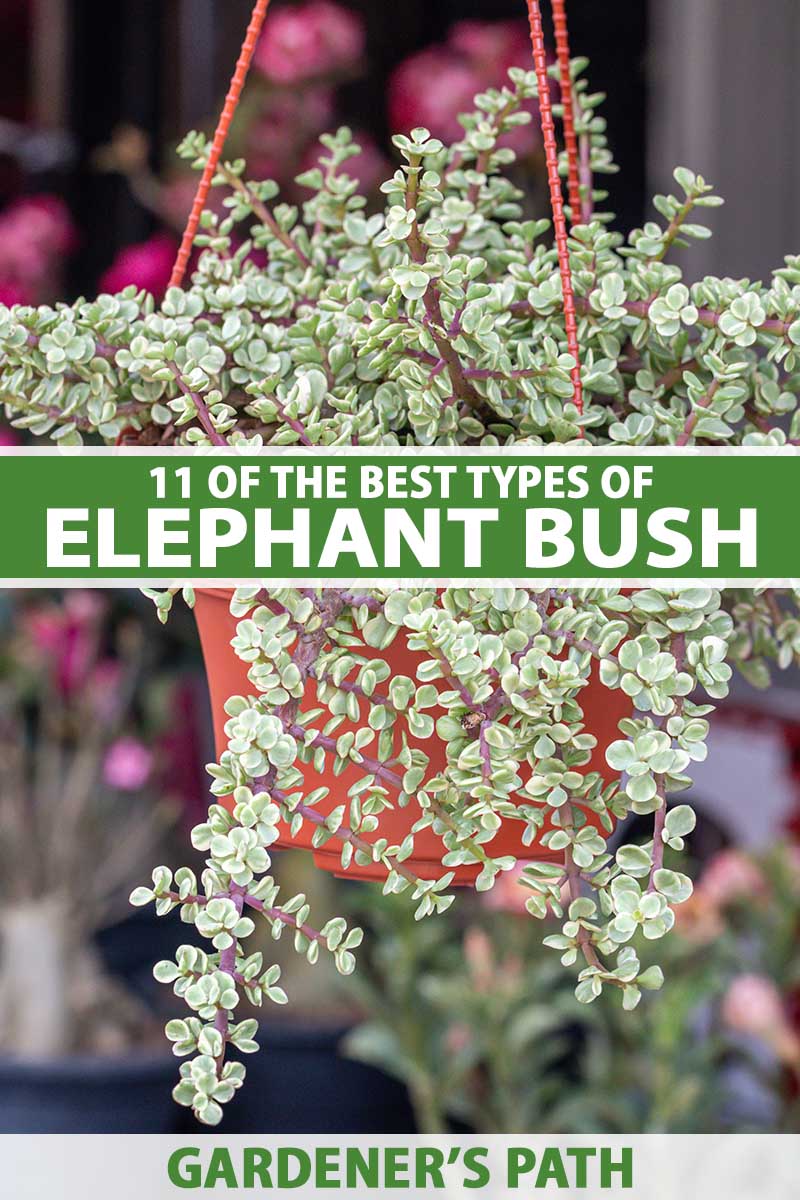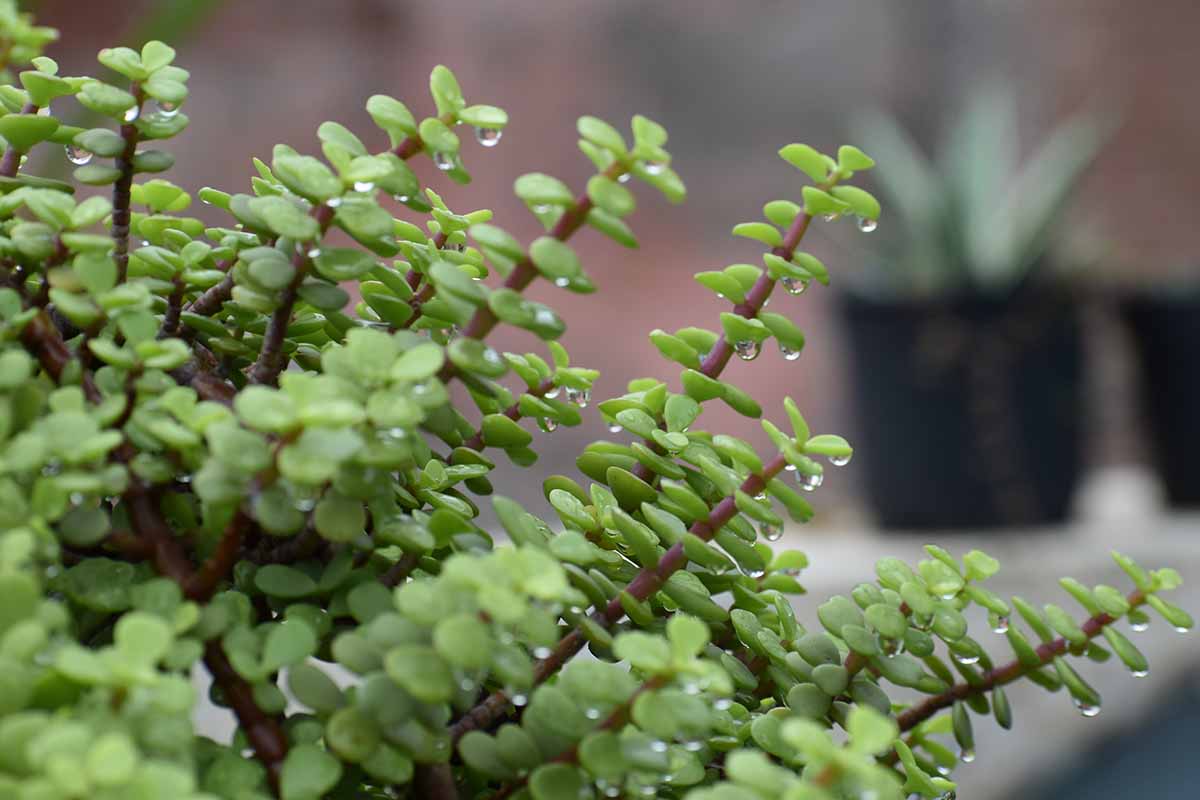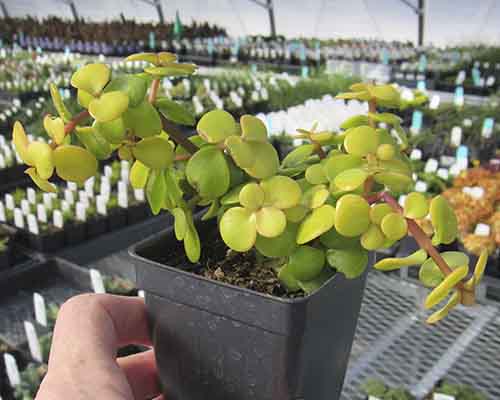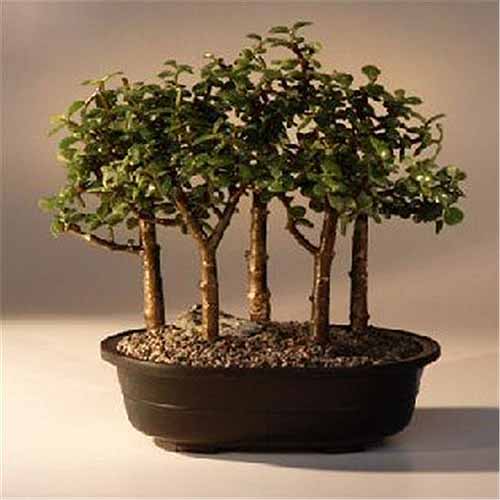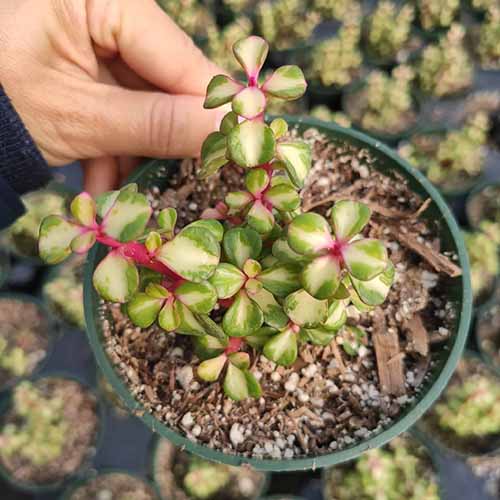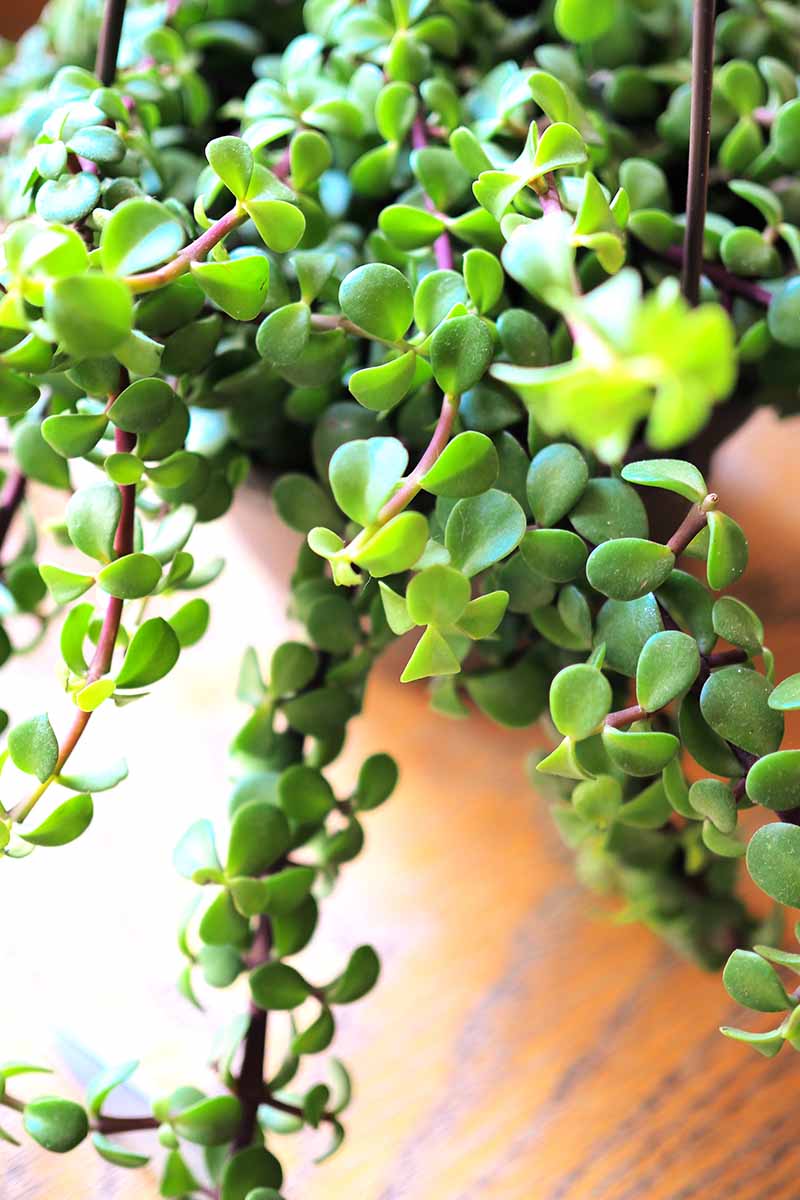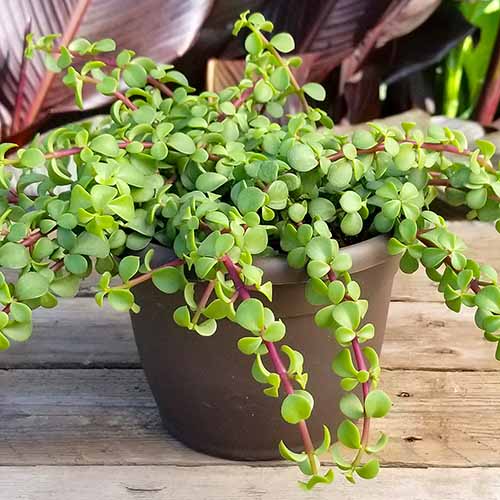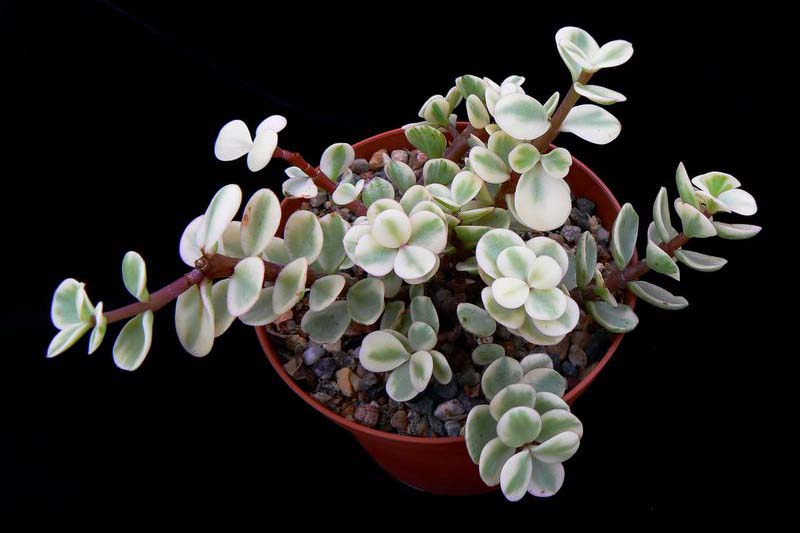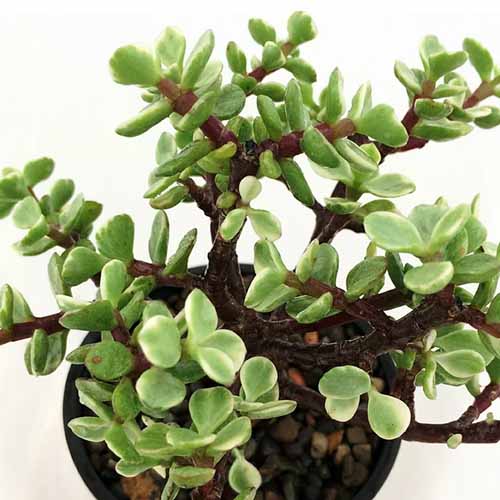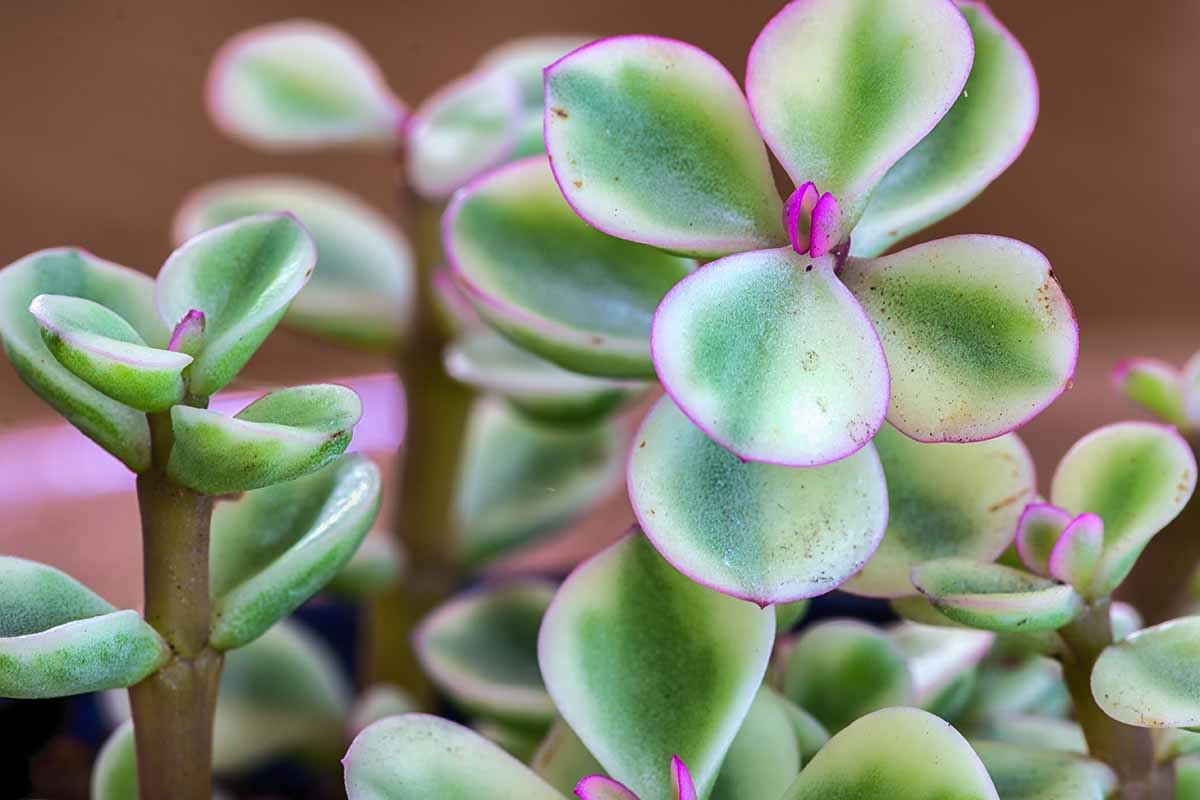We link to vendors to help you find relevant products. If you buy from one of our links, we may earn a commission. We’re going to explore eleven different options so you can choose the type that will both suit your needs – and fit your fancy. Here’s a sneak peek at our list: Before we get started, if you’d like to review the care needs for this houseplant, be sure to check our complete guide to growing elephant bush.
1. Afra
The species plant, Portulacaria afra bears emerald-green leaves that are half an inch long. This variety was first discovered in a nursery in the 1960s, where its unique bark was thought to be the symptoms of a fungal infection. Portulacaria Afra in 1-Gallon Nursery Pot
2. Aurea
Also known as “yellow rainbow bush,” “gold elephant bush,” or “yellow elephant food,” ‘Aurea’ is a semi-trailing cultivar with a golden glow. New leaves on this variety are bright yellow, held on purple stems. Mature foliage is light green to pale yellow, on stems that have a prostrate growth habit before growing more upright as they mature. ‘Aurea’ in 3” Nursery Pot You’ll find ‘Aurea’ available for purchase in three-inch nursery pots from Winter Greenhouse via Walmart.
3. Bonsai
While any variety of P. afra that has an upright growth habit can be shaped into bonsai, you can get a jump start on this process by choosing a mature specimen that has already been trained into bonsai form. Group of 5 Baby Jade Bonsai 10”-11” P. Afra Trees You can purchase a forest of five elephant bush bonsai trees that are six to nine years old and 10 to 11 inches tall from Bonsai Boy.
4. Cork Bark
‘Cork Bark’ is an excellent cultivar for training as bonsai. It has an upright growth habit, emerald-green leaves, and develops rough and gnarly, grayish bark as it ages. Bonsai enthusiasts have since determined that there is, in fact, nothing wrong with ‘Cork Bark,’ and that it makes a wonderful bonsai. In 2015, this cultivar was introduced to market via the Huntington Botanic Garden’s International Succulent Introduction.
5. Lilliput
‘Lilliput’ is a diminutive cultivar that has petite, emerald-green leaves. This upright, dwarf variety is well-suited for use as a bonsai or in a small succulent planter. It’s a fast grower with compact foliage. ‘Lilliput’ is a naturally occurring variety that was discovered in a plant nursery in 2013, and patented by Altman Specialty Plants in 2019.
6. Macrophylla
Going from the smaller to the larger end of the spectrum, ‘Macrophylla’ is also known as “large leaf elephant food” and has more sizeable leaves than the species plant. Emerald-green leaves reach an inch long, are held on upright plants, and are more spaced out along the stems, bearing a closer resemblance to jade plant (Crassula ovata). This variety is also known as ‘Limpopo.’
7. Manny
‘Manny’ is a variegated cultivar that has mint green leaves with dabs of cream, and purple-outlined leaf margins held on thick, upright stems. Leaves are thick and rounded, with some being slightly scalloped towards the edges, giving the foliage of this plant more texture than other varieties. ‘Manny’ is a naturally occurring variety that was found in a nursery in California in 2014.
11. Variegata
A variegated cultivar, ‘Variegata’ is similar to ‘Medio Picta’ but with reverse coloring. While most of the foliage is variegated, some leaves may be all cream with pink margins, and some all-green leaves can appear as well. New leaf buds are pink. Also known as ‘Kaleidoscope,’ the foliage of this cultivar is held on bright pink to red stems. ‘Medio Picta’ You’ll find ‘Medio Picta’ in two-, four-, or six-inch nursery pots available to purchase from the Succulents Depot via Walmart.
9. Prostrata
‘Prostrata’ is a low growing, spreading variety of P. afra. Also known as “groundcover jade,” this is an excellent type of elephant bush to choose if you would like to grow it in a hanging basket. This variety is sometimes called “dwarf elephant food.” Its leaves are smaller than the species plant but larger than those of ‘Lilliput.’ Also called ‘Minima,’ this plant can also be used as a ground cover in a mixed succulent planter. ‘Prostrata’ in Hanging Basket You’ll find ‘Prostrata’ available for purchase in a six-inch hanging basket from Altman Plants via Walmart.
10. Skyscraper
‘Skyscraper’ has a narrow, upright growth habit. Emerald-green leaves are half an inch long and grow on reddish-brown stems that remain dark even when mature. This variety is also called “narrow elephant’s food.” This variety, known as “rainbow bush,” has mint green leaves with cream-colored margins that are sometimes edged in pink. This variegated form of P. afra has a compact, upright growth habit and exhibits slower growth than the species plant. It is also less tolerant of direct sun. Variegata Rainbow Bush in 2.5” Pot Purchase a rainbow bush in a two-and-a-half-inch pot from Hirt’s Gardens via Walmart. Learn more about growing and caring for rainbow bush in our guide. (coming soon!)
A Handsome Herd of Elephants
You herd it here first, there are enough different types of spekboom to create your own collection. Whether you are looking for a specimen for a hanging basket or an upright type to create a beautiful bonsai, I bet you found one or two baby jades that made you feel like trumpeting with delight! Which elephant bush has struck your fancy? Do you have any other favorites that we didn’t include here? Are you trying to figure out which one you have? Be sure to post a photo and let us know in the comments section below! If you’re up for an extended stay on the succulent side, here are some additional articles that are sure to keep you enthralled:
How to Grow and Care for SucculentsPropagating Succulents in 5 Easy Steps11 Easy-Care Exotic Succulents to Grow at Home
